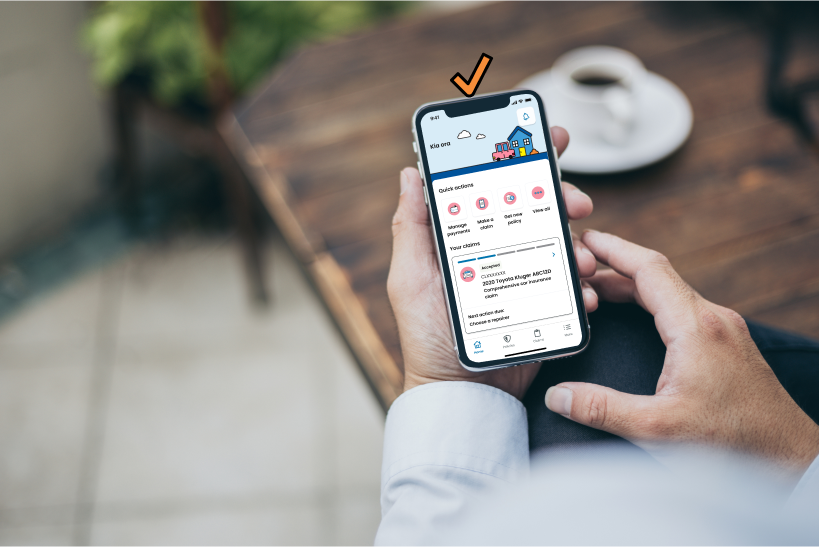Excess – it’s one of those tricky insurancey things that can cause confusion and frustration. So, we thought it was about time to answer your questions around this topic.
What is an excess?
An excess is the amount that you contribute to a claim. If you make a claim and it’s accepted, your insurer will pay the repair or replacement costs that are over your excess amount.
There are a few different types of excesses which can make things a bit confusing. You might hear some people talk about a basic, standard or an imposed excess. Let’s break down each:
- Basic or standard excess - this excess is just like it sounds, a standard excess that would apply to any claim. Different policies have different standard excesses, for example, many car policies will have a standard excess of $400 along with age related additional amounts for the driver (see below). Most contents policies will have a standard excess of $250, and many home policies will have a standard excess of $400. That’s why it’s important to review your policy documents and check what your excess is.
- Imposed excess - an imposed excess is one that we set. This usually occurs when there is a higher risk, for example if your home is going to be unoccupied for a long period of time (60 days or more), we may impose a higher excess while the home is vacant, or if your vehicle type is popular among thieves we may impose a higher excess.
- Age and licence related excess - If you, or one of the drivers of your car is under 25, an additional age-related excess will apply if they are involved in an accident while driving the car. This age-related excess is in addition to the basic/standard excess. The amount ranges, depending on their age at the time of the accident and whether they are named as a driver on the policy or not. In addition to age, your licence type may have an impact on your excess. If you hold a learner, restricted or overseas licence, you may have an additional excess applied on top of your basic/standard excess and any applicable age excess. These additional excesses will be noted on your policy schedule.
Why do I have an excess?
The excess helps keep the cost of handling and meeting insurance claims down and so the premiums everyone pays are cheaper.
When do I need to pay my excess?
Whenever you make a claim, an excess will be required to be paid, unless it’s specifically stated otherwise in the policy wording. There are some instances where no excess will be payable. For example, on our car insurance policies you can select an excess-free windscreen optional benefit on top of your policy.
Who do I pay my excess to?
This depends on the type of claim and item you’re claiming on. Most of the time your excess will be paid directly to the supplier or repairer (such as the panel beater or appliance store). If you have a total loss (where the item isn’t being repaired but we pay you a settlement instead), then we will deduct the amount of your excess from your settlement amount. When you lodge a claim, we will let you know who your excess needs to be paid to. If you pay your premium by instalments, we also deduct the remaining instalments from the total loss settlement as well as the excess.
Can my excess be waived?
No - it’s the amount that applies irrespective of whether you, someone else or mother nature caused the damage. An excess applies to all claims, unless it’s stated otherwise in the policy wording.
If you have a claim under both your State home and State contents policies for the same incident at your home, you will only have to pay one excess which will be the highest excess of the two policies (the policy with the lowest excess will have its excess waived).
But I’m not at fault, do I still need to pay an excess?
If you have Comprehensive car cover with State, you have excess protection cover. This means that if an identifiable driver of another vehicle causes loss that is covered by your policy, we will waive or refund your excess as long as the following criteria are met.
You must give us enough information to establish that the driver of the other vehicle was completely at fault, the registration number of the other vehicle and information we need to identify the driver (including name, phone number and address), and reasonable help to recover your claim from the driver of the other vehicle, or from its owner.
In other situations (e.g. someone crashes into your home’s front fence) where we recover the full costs of your claim from the responsible person or their insurer, we will be able to reimburse your excess.
Where can I find out what my excess is?
Your excess will be noted on your policy schedule. The policy schedule is a document that we will send you when you first insure your home, car or contents, as well as at each renewal. If you have registered with My State, your online account, simply login and download a copy of the latest documents we sent you. If you don’t already have an online account, register with your policy number.
Check out your policy schedule and policy wordings to find out the excess amount(s) so there’s no surprises if you need to claim.
You might also like...
-
 December 2024Insurance Blog | State Insurance
December 2024Insurance Blog | State InsuranceSwitch to email
-
 March 2024Insurance Blog | State Insurance
March 2024Insurance Blog | State InsuranceInsuring your electric vehicle with State: Navigating car insurance for EVs and hybrids
-
 March 2024Insurance Blog | State Insurance
March 2024Insurance Blog | State InsuranceThe ins and outs of Third Party Car Insurance
